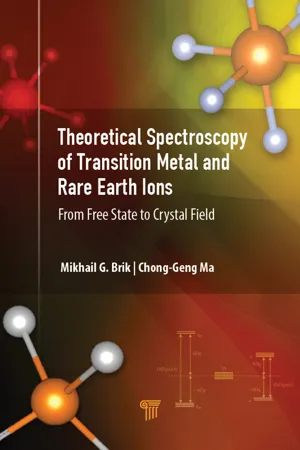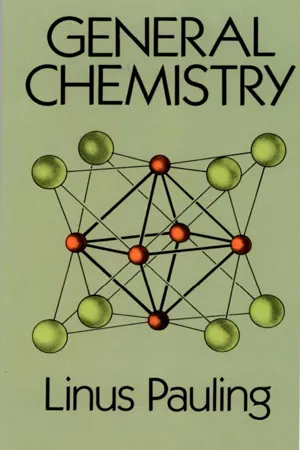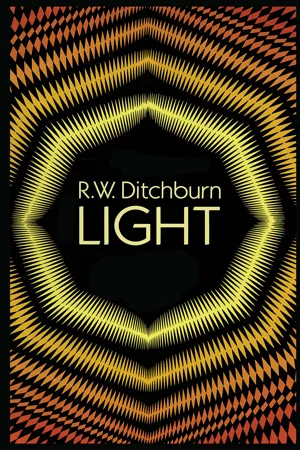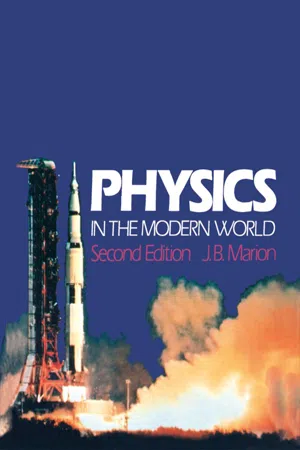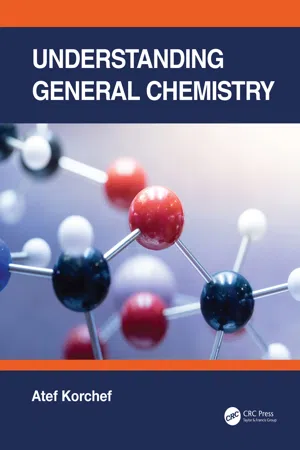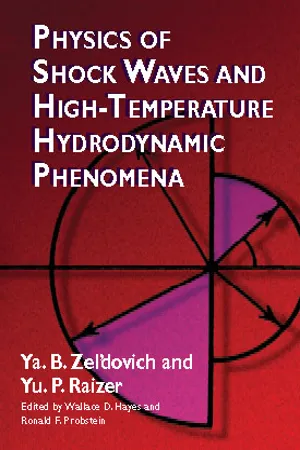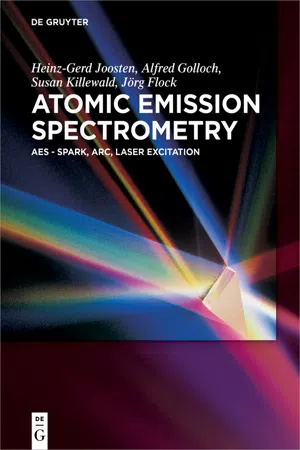Physics
Hydrogen Spectrum
The hydrogen spectrum refers to the unique set of wavelengths of light emitted or absorbed by hydrogen atoms. When an electron in a hydrogen atom transitions between energy levels, it emits or absorbs photons of specific energies, resulting in distinct spectral lines. These lines are characteristic of hydrogen and are used to study atomic structure and energy levels.
Written by Perlego with AI-assistance
Related key terms
9 Key excerpts on "Hydrogen Spectrum"
- eBook - ePub
Theoretical Spectroscopy of Transition Metal and Rare Earth Ions
From Free State to Crystal Field
- Mikhail G. Brik, Ma Chong-Geng, Mikhail G. Brik, Ma Chong-Geng(Authors)
- 2019(Publication Date)
- Jenny Stanford Publishing(Publisher)
Chapter 3The Theory of Atom of Hydrogen
3.1 Introduction
In the previous chapter, the basic processes of light absorption and emission in simple quantum mechanical systems were considered. Very important concepts of the induced and spontaneous transitions were introduced; general results were obtained for the probabilities of those transitions. At the same time, we did not specify yet what the nature of the energy levels involved in these transitions was. It was not mentioned at all what the main characteristics of those levels are, how their energetic positions can be obtained or how the energy levels can be described in a unified way. Moreover, a mixed approach, in which the atom was considered quantum-mechanically, and the incident radiation was treated as a monochromatic wave, was employed. A deeper quantum mechanical analysis of the energetic spectra of free atoms/ions will constitute the main content of this and next chapters. Certain quantum mechanical ideas and mathematical tools will be used for a quantitative description of the atomic states.3.2 Experimental Spectroscopic Results Known by the End of the 19th Century-Beginning of the 20th Century
The second half of the 19th century was marked by fast development of the experimental spectroscopy as a separate part of physics. It was preceded by pioneering works by J. von Fraunhofer (discovery of the dark lines in the solar spectrum, which later were explained as the absorption lines of various atoms), G. Kirchhoff and R. Bunsen (the laws of thermal radiation, discovery of several chemical elements, etc.). By that time, considerable amount of information about absorption and emission spectra of various elements and compounds had been collected. In particular, it was well established that the spectrum of atomic hydrogen in the visible region consists of four very sharp lines with the wavelengths of 410, 434, 486, 656 nm. However, no clear understanding of physical reasons for those experimental results was developed. In an attempt of finding any explanation (or, at least, description of this spectrum), a Swiss mathematician and physicist J. J. Balmer noticed in 1885 that these wavelengths fit the following expression: - No longer available |Learn more
- Steven Boone, Drew H. Wolfe(Authors)
- 2011(Publication Date)
- Collins Reference(Publisher)
waveparticle duality .8.2 ATOMIC SPECTRA AND THE BOHR MODEL OF THE ATOMThe Bohr model of the atom was based on observations of the atomic spectra of elements. SpectroscopyThe study of the properties of light from the emission (or absorption) of energy from matter is called spectroscopy . Light is analyzed using a spectroscope or spectrometer . Light enters this optical instrument through a slit and passes through either a prism or diffraction grating. Both the prism and diffraction grating disperse the light into wavelengths of which it is composed.Line and Continuous SpectraLight emitted by different gases each produce their own distinct pattern of colors. Some spectra consist of individual lines at specific frequencies separated by dark regions. These are called line spectra . Others lack the dark regions and have a continuous range of frequencies in their spectra. They are termed continuous spectra . One of the outcomes of early spectroscopy experiments was that each element has its own characteristic spectrum.The Hydrogen SpectrumThe Swiss scientist Johann Balmer (1825–1898) proposed a mathematical equation that may be used to calculate the wavelengths of the lines in the visible spectrum of hydrogen. One way to express Balmer’s equation is as follows.In the Balmer equation, n is an integer with a value greater than 2, is the wavelength in m, and 1.097 × 107 m-1 is the Rydberg constant. This value is specific to hydrogen. Other elements have different Rydberg constant values.Exercise 8.8(a) Use the Balmer equation to calculate the wavelength in nm when n = 3, the longest wavelength in the visible H spectrum. (b) What trend in wavelength is found as the n - eBook - ePub
- Grant R. Fowles(Author)
- 2012(Publication Date)
- Dover Publications(Publisher)
When an electron undergoes a transition from one state to another, it can do so by emitting or absorbing radiation. The frequency v of this radiation is given by(8.1)where ΔE is the energy difference between the two states involved, and h is Planck’s constants.These assumptions represent a radical departure from the classical or Newtonian concept of the atom. The first is suggestive of the quantization of cavity radiation introduced earlier by Planck. The second idea amounts to saying that an atom emits, or absorbs, a single photon upon changing from one quantized state to another, the energy of the photon being equal to the energy difference between the two states (Figure 8.2 ).Figure 8.2 . Diagram showing the processes of absorption and emission.The frequency spectrum of an atom or molecule is given by taking the various possible energy differences ∣E 1 — E 2 ∣ and dividing by h. In order to calculate the actual spectrum of a given atom, one must first know the energies of the various quantum states of the atom in question. Conversely, the energies of the quantum states can be inferred from the measured frequencies of the various spectrum lines.The Bohr Atom and the Hydrogen Spectrum In his study of the hydrogen atom, Bohr was able to obtain the correct formula for the energy levels by introducing a fundamental postulate concerning angular momentum. According to this postulate, the angular momentum of an electron is always an integral multiple of the quantity h /2π, where h is Planck’s constant.An electron of mass m traveling with speed u in a circular orbit of radius r has angular momentum mur. Hence the relation(8.2)expresses the quantization of the orbital angular momentum of the electron. The integer n is known as the principal quantum number - eBook - ePub
- Linus Pauling(Author)
- 2014(Publication Date)
- Dover Publications(Publisher)
5Atomic Structure and the Periodic Table of the Elements
It was discovered about one hundred years ago that many physical and chemical properties of the elements vary in a roughly periodic way with increasing atomic weight. The study of chemistry is greatly aided by continued reference to the periodic table (Table 5-3 ), an arrangement of the elements determined by their atomic numbers, in which this periodicity is made evident. Moreover, the detailed electronic structures of atoms have been determined during the last fifty years, and it has been found possible to correlate these electronic structures with the properties of the elements in a reasonably satisfactory way. These matters are discussed in the following sections.5-1. The Bohr Theory of the Hydrogen Atom
Most of our knowledge of the electronic structure of atoms has been obtained by the study of the light given out by atoms when they are excited by high temperature or by an electric arc or spark. The light that is emitted by atoms of a given substance can be refracted or diffracted into a distinctive pattern of lines of certain frequencies; such a distinctive pattern of lines is described as the line spectrum of the atom.FIGURE 5-1The Balmer series of spectral lines of atomic hydrogen. The line at the right, with the longest wavelength, is Hα. It corresponds to the transition from the state with n = 3 to the state with n = 2.The careful study of line spectra began about 1880. Early investigators made some progress in the interpretation of spectra, in recognizing regularities in the frequencies of the lines: the frequencies of the spectral lines of the hydrogen atom, for example, show an especially simple relationship with one another, which will be discussed below. The regularity is evident in the reproduction of a part of the spectrum of hydrogen in Figure 5-1 - eBook - ePub
- R. W. Ditchburn(Author)
- 2013(Publication Date)
- Dover Publications(Publisher)
§ 17.2 are in accord with the hypothesis.17.4. The Line Spectra of Atoms.During the nineteenth century the wavelengths of very large numbers of lines were measured with an accuracy of about one part in a hundred thousand. This compared favourably with the accuracy of other contemporary physical measurements, and many attempts were made to find empirical relations between the wavelengths. These relations might be expected to provide a foundation for a theory of spectra related to theories of atomic structure. No important progress was made until it was realized that the empirical laws of spectrum analysis are all expressed more simply in terms of wave numbers (or reciprocal wavelengths) rather than wavelengths. Even so, the general analysis of spectra is very complicated. For our purposes it is sufficient to state certain principles of spectrum analysis, and these may be shown by considering the spectrum of the hydrogen atom. It is found that the spectrum of the hydrogen atom can be analysed into the following series:(a) The Lyman Series.This series of lines is in the far ultra-violet region of the spectrum. The wave numbers are given bywhere R is a constant whose numerical value is 109,677.6 cm.-1 , and n is an integer greater than 1.(b) The Balmer Series.This series is in the visible spectrum and the near ultra-violet. The wave numbers are given bywhere n is an integer greater than 2. This series appears as a set of absorption lines in many stellar spectra. It may be obtained in emission by a discharge in hydrogen at low pressure. More than 40 lines have been observed.(c) The Paschen Series.This series is in the near infra-red. The wave numbers are given bywhere n is an integer greater than 3.(d) The Brackett Series.This series is in the far infra-red. The wave numbers are given bywhere n is an integer greater than 4,The arrangement of these series is shown in fig. 17.4 .Fig. 17.4.—The hydrogen series - eBook - ePub
- Jerry Marion(Author)
- 2012(Publication Date)
- Academic Press(Publisher)
18THE MODERN VIEW OF ATOMS
Publisher Summary
Atoms emit radiation only with certain definite wavelengths, and each atomic species has its own characteristic spectrum of emitted radiation. This chapter explains the Bohr model of the hydrogen atom. It describes the relative energies for several of the hydrogen atom states. The state of an electron in an atom is completely specified only when all four quantum numbers are given. The chapter discusses the quantum numbers and their significance. It focuses on the quantum theory of the hydrogen atom. The chapter explains the need of new principle in the periodic table and Pauli’s exclusion principle. Light from an ordinary source consists of spontaneous photons that are emitted in random directions. On the other hand, laser photons are emitted in a narrow beam that retains its small size even though it travels a substantial distance through space.In the preceding chapter we traced the development of quantum theory from the viewpoint of particles and photons. Actually, there was a parallel historical development concerned with the quantum properties of atoms. We now examine this approach to the problem, and we see, finally, how the two lines of attack merge into a single successful quantum theory.By 1912 new and important discoveries concerning atoms and radiation had been accumulating for about 15 years. The electron had been identified by Thomson in 1897. Planck had made his quantum hypothesis in 1900, and Einstein had adopted this idea in 1905 to explain the photoelectric effect. Rutherford’s nuclear model of the atom was proposed in 1911. And in that year, a young Dane, Niels Bohr (1885–1962), came to work in Thomson’s laboratory at Cambridge.Bohr wondered what connection there could be between the quantized nature of radiation and the structure of atoms. Experiments had shown that atoms emit radiation only with certain definite wavelengths and that each atomic species has its own characteristic spectrum of emitted radiation. Bohr concluded that if an atom could emit radiation only with definite wavelengths (that is, with discrete energies), the internal energy of the atom must also be quantized. Thomson, Bohr’s host at the Cavendish Laboratory, would not accept the idea that atoms possess a quantized structure–he much preferred a classical atomic model. Several sharp arguments over the matter took place and this unpleasantness caused Bohr to decide to leave Cambridge and spend the remainder of his fellowship in a more forward-looking atmosphere. Bohr chose Manchester, where Rutherford and his colleagues were investigating atomic structures with radioactivity methods. - eBook - ePub
- Atef Korchef(Author)
- 2022(Publication Date)
- CRC Press(Publisher)
6 Introduction to Quantum Theory
DOI: 10.1201/9781003257059-66.1 Objectives
At the end of this chapter, the student will be able to:- Recognize the wave particle duality of light and the wave particle duality of matter;
- Explain the atomic line spectrum of a hydrogen atom;
- Explain the photoelectric effect; and
- Define the different rules for electronic configurations and write the electronic configuration of any atom.
6.2 Electromagnetic Radiation – Light
Electromagnetic radiation is a form of energy that is propagated through space and takes many forms, such as radio waves, microwaves, infrared, ultraviolet, light and X-rays. Each electromagnetic radiation can be characterized by its wavelength and/or frequency. The wavelength (λ) is the distance from one crest to the next in the wave (Figure 6.1 ). It is measured in units of distance. The frequency (ν) is the number of complete cycles per second, expressed in s−1 or Hz. The frequency ν of a wave is inversely proportional to its wavelength, λ:FIGURE 6.1 The wavelength λν =C λwhere the speed of light, C, is the same for all electromagnetic radiation (C = 3 × 108 m s−1 in a vacuum).Practice 6.1 The yellow light given off by a sodium lamp has λ = 589 nm. What is the frequency of this radiation?Answer:C = 3.00 × 108 m s−1 and λ = 589 nm = 589 × 10−9 m for the yellow light from a sodium lamp.The frequency of the yellow light is ν = C/λ = 3.00 × 108 /589 × 10−9 = 5.09 × 1014 s−1 = 5.09 × 1014 Hz6.3 Wave-Particle Duality of Light
Planck proposed in 1900 that atoms can gain or lose only certain quantities of energy by absorbing or emitting radiation:ΔE= n h νa t o mwhere n is a positive integer (n = 1, 2, 3, etc.) and h is Planck’s constant (h = 6.62 × 10−34 - Ya. B. Zel’dovich, Yu. P. Raizer, Yu. P. Raizer(Authors)
- 2012(Publication Date)
- Dover Publications(Publisher)
4 . The radiant energy losses and also the surface brightness are, in this case, considerably smaller than in the case of a continuous spectrum. Similarly, for radiant energy transfer within the body the line spectra are frequently of little importance in comparison with that of continuous spectra. Therefore, most of our attention in this chapter will be devoted to continuous and quasi-continuous molecular spectra, rather than to line spectra.Fig. 5.1 . Emission spectrum of a heated body which is perfectly transparent to the continuous spectrum, but is opaque to a line spectrum. The dashed curve corresponds to the Planck spectrum at the given temperature.At high temperatures, when the molecules are dissociated and the gas consists of atoms or (at even higher temperatures) of ions and electrons, the continuous absorption and emission spectra arise as a result of bound-free and free-free transitions. The calculation of the electronic transition probabilities, the results of which could then be used to find the absorption (and emission) coefficient for the case of multi-electron atoms (complex atomic systems), is a quantum-mechanical problem of considerable difficulty. This problem requires a separate analysis for each particular case, for each atom or ion, and also for each quantum state of the system. Such calculations have been carried out only for a few particular cases.Complete and relatively simple calculations can be carried out only for the simplest hydrogen-like (hydrogenic) systems, that is, for the transitions of a single electron in the Coulomb field of a positive charge Ze. In practice, even when considering the emission and absorption of light in gases composed of complex atoms or ions, it is frequently necessary to use the relations derived for hydrogen-like systems. The atom or ion is in this case represented as an “ atomic remainder ” with a positive point charge Ze, in the field of which an “ optical ”electron moves, undergoing transitions from one energy level to another with the absorption or emission of a photon. As will be shown below, this approximation is to some extent justified in many cases of practical importance.- eBook - ePub
Atomic Emission Spectrometry
AES - Spark, Arc, Laser Excitation
- Heinz-Gerd Joosten, Alfred Golloch, Jörg Flock, Susan Killewald(Authors)
- 2020(Publication Date)
- De Gruyter(Publisher)
2 Atomic emission spectrometry: fundamentalsThe following facts are fundamental to atomic emission spectrometry (AES):- Material can be vaporized, atomized and ionized when sufficient energy is applied using, for example, an electrical arc or spark.
- The energy input causes the atoms and ions to emit radiation.
-
The radiation is not regularly distributed over the entire spectral range but occurs only in a finite number of narrow wavelength ranges. If a spectral apparatus breaks the spectrum down into a band of radiation in a way that the shortest wavelengths appear on the left edge and the longest wavelengths on the right edge, then the previously mentioned wavelength intervals appear within this spectrum as vertical lines with different positions and intensities.
- Atoms and ions from every element generate spectra that are characteristic in respect to position for the given element.
- The elemental content can be determined from the radiation intensity.
This chapter roughly outlines how these line spectra, which are so fundamental for the method of AES, occur. The theoretical foundations outlined in Chapter 2 serve the general understanding of the key relationships. Spectral lines for arc/spark spectrometry are empirically examined for their suitability. The purely practice-oriented reader can omit this chapter.2.1 Researching the Hydrogen Spectrumin the nineteenth century
The emission spectra for hydrogen were measured in the nineteenth century in the course of the development of AES. The discovery of series of lines in the spectrum led to equation-like relationships between the wavelengths of these signals.In 1885, Balmer described a series that followed the equation:(2.1)λ = An 2n 2− 4Here, A is at first an empirically determined constant length of 364.56 nm, n is an integer ≥ 3 and λ is the wavelength in nanometers.In molecular spectroscopy, the notation of wave numbers as oscillations per centimeter is more common. However, wave numbersν ˉare expressed exclusively in m−1 in this chapter to avoid confusion. The wave numberν ˉis then the reciprocal value of the wavelength λ
Index pages curate the most relevant extracts from our library of academic textbooks. They’ve been created using an in-house natural language model (NLM), each adding context and meaning to key research topics.
